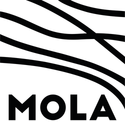Blind Lane (West of), ARC BLN 97
Museum of London Archaeology, 2004. (updated 2017) https://doi.org/10.5284/1044685. How to cite using this DOI
Data copyright © High Speed 1 unless otherwise stated
This work is licensed under the ADS Terms of Use and Access.
Primary contact
Stuart
Foreman
Senior Project Manager
Oxford Archaeology (South)
Janus House
Osney Mead
Oxford
OX2 0ES
UK
Tel: 01865 263800
Fax: 01865 793496
Resource identifiers
- ADS Collection: 1730
- DOI:https://doi.org/10.5284/1044685
- How to cite using this DOI
Introduction

As part of a programme of archaeological investigations along the route of the Channel Tunnel Rail Link, Union Railways Limited (URL) commissioned the Museum of London Archaeology Service (MoLAS) to undertake an evaluation comprising thirteen trial trenches situated in 2.7 ha. of land between the villages of Sevington and Mersham, 3.7km south-east of the centre of Ashford, Kent. The area of investigation (ARC BLN97) was bounded by the London to Folkestone main railway line to the south and by farmland to the west, north and east.
Archaeological features were located in 8 of the 13 trenches. Curvilinear ditches and slots were concentrated towards the eastern end of the evaluation area and may represent two prehistoric enclosures. Linear ditches were spread more evenly across the site and may indicate the survival of one or more field systems.
Pottery was recorded in seven of the twenty cut features. One largely complete bucket urn may be related to the Deverel Rimbury tradition of the mid 2nd millennium BC. Other sherds may be early 1st millennium BC in date. Occupation therefore appears to cover the Middle and Late Bronze Ages.
The Middle Bronze Age coincided with the climatic optimum of the mid 2nd millennium BC when the climate of Britain was favourable for the expansion of settlement onto poorer soils and into upland areas. The poorly drained soils of the Ashford area may therefore have been farmed at this time. Climatic deterioration in the late 2nd millennium meant that settlement in these areas was no longer practical and there was therefore a contraction of settlement in the early 1st millennium BC.
An Archaeological Excavation (ARC BLN 98) was also undertaken at Blind Lane as part of CTRL phase 1.
N.B. Much of this work here has been superseeded by works associated with the Phase Two and Schemewide programmes, but are included here for completeness. Those wishing to use the most current data are urged to view the Channel Tunnel Rail Link Section 1 Project pages.






